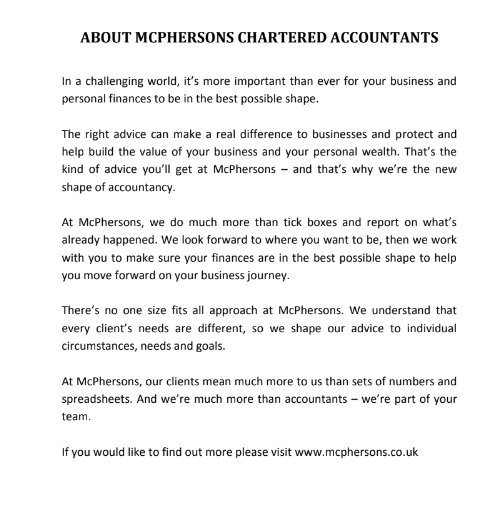


As part of your business planning process, conduct a SWOT analysis to help you identify your company’s: * Strengths * Weaknesses * Opportunities * Threats Use this to again set actions for improvement. Here are some questions to ask: **Strengths** What are we really good at? What are our unique skills? Where do we outperform our competitors? **Weaknesses** What are we really poor at? What resources are we short of? Where are we at a competitive disadvantage? **Opportunities** How could we improve our sales? How could we improve our efficiency? What new products/services/niche markets could be added? **Threats** What regulations are changing? What products/services are losing demand? What resources are difficult to find? What are our competitors doing?
**5 GET CLEAR ON YOUR PRODUCTS AND SERVICES** A useful tool for deciding how to ‘position’ your products and services is the Porter Generic Strategy Model (developed by Michael E. Porter (1998), Harvard Business School Professor and author of numerous texts on strategy). The model suggests that businesses are most successful when they target one area of the market only. Rolls Royce, for example, goes after a niche market with a high degree of differentiation. Asda, on the other hand, goes after a total market using a low price strategy. Where do you think these well-known companies position themselves in the market? * Mercedes-Benz * British Airways * Apple * Hyundai * Easyjet * John Lewis
**6** Now, indicate where your business currently is and where you want it to be. Deciding which box you fit into (or wish to fit into) will help you write your business plan, focus your marketing and define your Unique Selling Proposition (USP). Here’s another way to apply Porter’s principles to your business: First, make a list of the principal products and services that you offer. Now plot these on Grid A below:
**7** Next, make a list of the principal industries, professions and types of customers that you serve. Plot each of these on Grid B below: This exercise will tell you where to focus your marketing efforts, namely in the upper right-hand quarter of each grid (high growth and relatively easy). By focusing your energy on offering the right things to the right groups, your marketing will be more successful.
**8** **5 DEFINE YOUR UNIQUE SELLING PROPOSITION (USP)**
Before you design your logo or write a clever slogan, you need to identify your USP. This is what gives you an advantage over your competitors as it differentiates you from them. So what constitutes an effective USP? A winning USP: * Makes a proposition to the customer that you will provide a specific benefit to them * Includes a benefit that your competitors can’t or don’t offer * Is a strong enough promise that it attracts customers Examples of successful USPs include Apple’s commitment to the most intuitive, sleekly designed technology, Spar’s focus on speed and convenience (or opening hours) and Ryan Air’s focus on price. Start by asking yourself and your team members to identify the following: * The business you are in * Your current and desired customers * Your competition * What makes you different * The unique benefits that you offer your customers Remember: “It’s more important to be different than it is to be better.”
**9** Seth Godin (2003) wrote an interesting book entitled Purple Cow. This extract emphasises the need to be different: “When my family and I were driving through France a few years ago, we were enchanted by the hundreds of storybook cows grazing on picturesque pastures right next to the highway. For dozens of kilometers, we all gazed out the window, marveling about how beautiful everything was. Then, within twenty minutes, we started ignoring the cows; the new cows were like the old cows, and what once was amazing was now common. Worse than common, it was boring. Cows, after you’ve seen them for a while, are boring. They may be perfect cows, attractive cows, cows with great personalities, cows lit by beautiful light, but they’re still boring. A Purple Cow, though. Now that would be interesting. (For a while).”
Planning is a key element to running a successful business. To get where you want to go, you’ll need a business plan. Use the previous 5 exercises to help you write your plan. Most businesses don’t have any kind of plan. So, start with a simple plan that pinpoints what you want to achieve. Here’s an example:
1. In five years’ time, I want the business to be worth £5 million
2. To achieve this, it must make annual profits of at least £1.5 million
3. To achieve this, it must have sales of £10 million
4. I need to increase my sales by, on average, £1 million a year
5. To do this, I will need to: a. Increase my customer base by 15% b. Increase the number of times my customers buy from me by 20% c. Raise prices by 10% Having developed a basic plan, it’s time to identify the constraints you think may get in the way of successful implementation. Consider the following:
1. **Inside the business, what are the principal constraints on our growth?** Some possibilities: * Lack of capital (financing) * Lack of credit from suppliers * Too many customers owing you money * Underperforming owners/attitude issues * Underperforming staff/attitude issues * Internal conflicts * Lack of direction * Outdated technology * Lack of marketing * Missing skills * Retirement and succession issues * Undesirable customers * Excessive payroll * High occupancy costs
2. **Outside the business, what are the principal constraints on our growth?** * The economy * Regulations * Competition * Demographics * Energy prices * Shipping costs What you should find is that you can’t do much about the outside constraints but you can do a lot about internal constraints.


